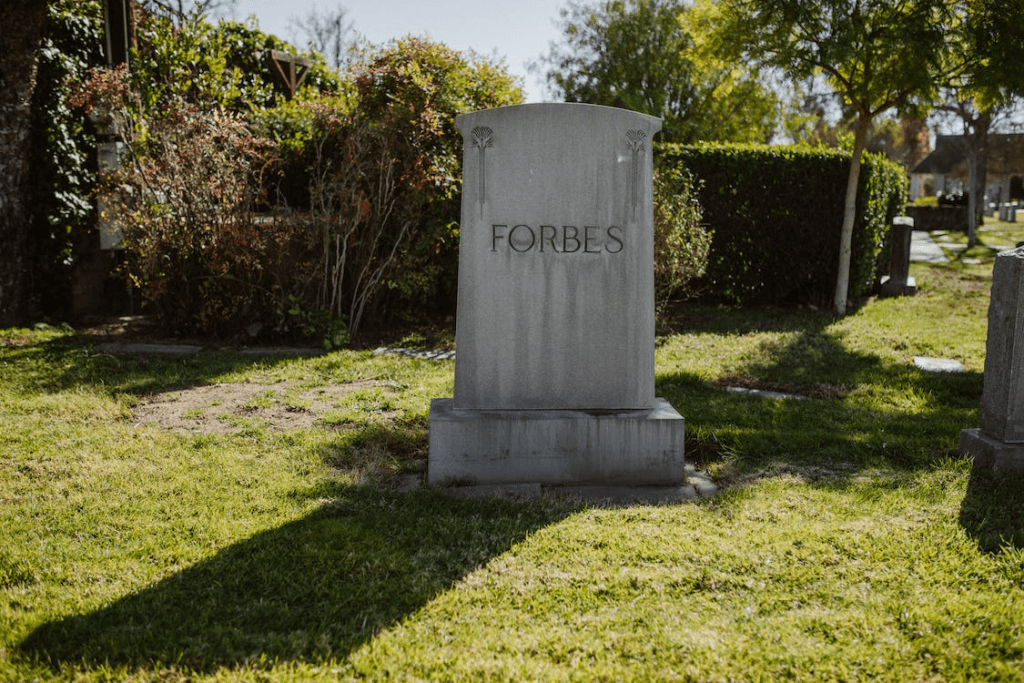Headstones are a traditional part of memorials and funerals. They mark the final resting place of a loved one and serve as a reminder of their life. But what is the history of the headstone? In this blog post, we will explore the evolution of the headstone, from the earliest examples to modern designs. We’ll take a look at materials used throughout the centuries and some of the most popular designs, such as the classic bahama blue granite headstone. So join us as we explore the history of the headstone.
Ancient Times
The history of the headstone can be traced back to ancient times. During this period, burials were a common way to honor and remember the dead. In some cultures, graves were marked with stones or other markers, such as wooden stakes, to denote the burial site’s location. In others, elaborate headstones were erected at the gravesite to commemorate the deceased.
One of the oldest examples of a headstone dates back to 4000 BC and was found in the Sumerian city of Ur in what is now Iraq. This headstone was made of alabaster and depicts two figures standing side by side. It is believed that it was used to mark the grave of a prominent figure, possibly a king or queen.
Other cultures worldwide have also been found to use headstones for burials. In Ancient Greece, funerary monuments were erected over graves and inscribed with a person’s name, dates of birth and death, and other pertinent information. These monuments often featured images of gods and goddesses and symbols related to death, such as winged skulls or vultures.
In Ancient Egypt, funerary monuments were built to commemorate the deceased. One example is the Sarcophagus of Ankh-ef-en-Khonsu, a coffin lid dating back to approximately 700 BC. It is decorated with hieroglyphics depicting religious scenes and is believed to have been used to mark the grave of a priest.
The practice of marking graves with headstones has been around for centuries. Though the styles have changed over time, the concept remains a physical reminder of those who have gone before us.
The Middle Ages
The Middle Ages, also known as the Medieval Period, spanned from the 5th to the 15th centuries. Headstones began to take on more ornamental features and shapes during this period. This was due to the influence of the Church, as they were used to designate graves of religious figures or essential people in the Church. Headstones also began to be inscribed with Christian symbols and inscriptions. In some cases, the symbols and inscriptions were used to indicate the deceased’s occupation and social status or to honor those buried. Headstones from this period were typically smaller and more simplistic in design. The majority of stones used for headstones during this period were made of sandstone, marble, limestone, and slate.
The Renaissance
During this period, headstones became more prominent and detailed, often featuring elaborate engravings depicting religious symbols or scenes from the deceased’s life. Many Renaissance-era headstones were designed to memorialize entire families, with larger stones commemorating an entire lineage rather than just an individual. A common feature on these headstones was a “recumbent effigy” – a depiction of the deceased in a lying position – as well as a variety of mottos and coats of arms associated with the family in question. These headstones often featured naturalistic carvings such as flowers and animals and architectural elements such as pillars, urns, and pedestals to add a sense of grandeur to their designs. While these Renaissance-era headstones were expensive to create, they remain some of the most beautiful memorials today, offering a window into a past era and a reminder of those who have gone before us.
The Modern Era
The modern era has seen a significant evolution of the headstone. No longer simply a marker for a grave, the modern headstone is often a work of art with intricate designs and symbols that reflect the life and personality of the deceased. Different materials, such as bronze or granite, and techniques like laser etching are now common in headstones. The cost of a headstone varies greatly depending on the material used, its size, and any special features or engravings. In addition to headstones that rest on the ground, cremation markers are available for those who choose cremation. They come in various styles and can commemorate a life or display a sentiment or message.
Overall, modern headstones offer families a way to honor the memory of their loved ones while still allowing them to express themselves artistically. Whether it’s a traditional marble headstone with a simple inscription or an elaborate bronze design, the modern era has opened up a whole world of possibilities for commemorating the lives of those who have passed away.
Wrapping Up
Headstones have come a long way throughout history, beginning as simple markers and evolving into highly detailed, intricate monuments representing the lives of those who have passed. Through the years, headstones have become a meaningful way to commemorate the life and achievements of the deceased, providing an enduring symbol of remembrance. Whether in its simplest form or as an intricate design, a headstone serves as a lasting tribute to a person’s memory and the impact they had on their community. As such, we must continue to recognize the importance of headstones and ensure that they remain a part of our culture for generations to come.
